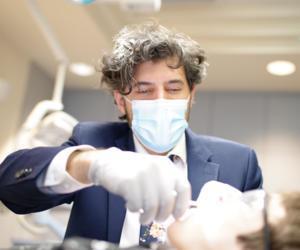Here you can find out more about corpus callosotomy (pediatric epilepsy surgery).
Epilepsy is a set of chronic neurological disorders characterized by seizures, and the diagnosis of epilepsy implies that there is an abnormality in the brain. This abnormality will result in more epileptic seizures.
There are different types of seizures categorized as either generalized seizures or partial seizures. In generalized seizures, the clinical manifestations indicate that the whole brain is involved from the beginning of the seizure.
Types of generalized seizures: generalized tonic-clonic seizure (recognized as grand mal seizure), absence seizure (petit mal seizure), atonic seizures (drop attacks), myoclonic seizures and tonic seizures.
The partial seizures are limited to one part of the body or to a particular function of the brain, indicating that the epileptic seizure started in one limited area of the brain. They can remain focal or may expand to the rest of the brain, and then are referred to as secondarily generalized seizures.
The complex partial seizures (sometimes called "temporal lobe seizures" or "psychomotor seizures"), in which consciousness is impaired, have greater arrays of symptoms.
Many different disorders of the brain may be associated with epilepsy – the child can be born with the predisposition to have epilepsy, in other patients the epileptic disorder is acquired, as a result of brain damage that occurred after birth.
There is no indication that short-lasting seizures will result in any brain damage but prolonged seizures (especially generalized tonic-clonic seizures) in some cases could result in brain damage, but this is very unusual.
Epilepsy is treated with antiepileptic drugs, which are effective in controlling seizures in 70%-80% of patients with epilepsy, but when drugs fail to control the seizures, the patients may improve with surgical procedures.
Surgery is indicated in a small group of children, at least after two or three years of continuous treatment with medications so many tests must be performed before surgery (EEG, a CT scan, MRI, functional MRI (fMRI), positron emission tomography (PET), single photon emission computed tomography (SPECT), magnetoencephalography (MEG), or ictal SPECT (a SPECT obtained at the time of the epileptic event)).
After all tests are completed and evaluated, a medical team (epileptologist, neuroradiologist, neuropsychologist and neurosurgeon) will decide if the patient is a viable candidate for surgery and in that case, what type of surgery is indicated.
Surgery is performed by a neurosurgeon with specialized training and experience in pediatric epilepsy surgery. It can be done directly on the brain (respective surgery or corpus callosotomy), or by implanting a stimulator of the vagus nerve in the neck (vagus nerve stimulation).
During partial corpus callosotomy, one section of the corpus callosum (nerve fibers that allow communication between both sides of the brain) is cut, whereas in total callosotomy the whole length of the corpus callosum is cut. The precise goal of this procedure is impaired communication between the two halves of the brain to prevent the rapid spreading of the epileptic event from one-half of the brain to the other.
There are some risks of epilepsy surgery, for example, bleeding inside the brain and infections that can result in meningitis. A complication which may occur later is the development of hydrocephalus, which may require another surgical procedure.
Also after callosotomy, some annoying subtle deficiencies may be experienced, for example, some patients may be able to identify, by visual recognition, and objects presented to one side of the brain, but might not be able to name them because the memory of the name is on the other side of the brain.
After epilepsy surgery, there is always the risk of failure which means recurrence of the epileptic seizures after the operation.





